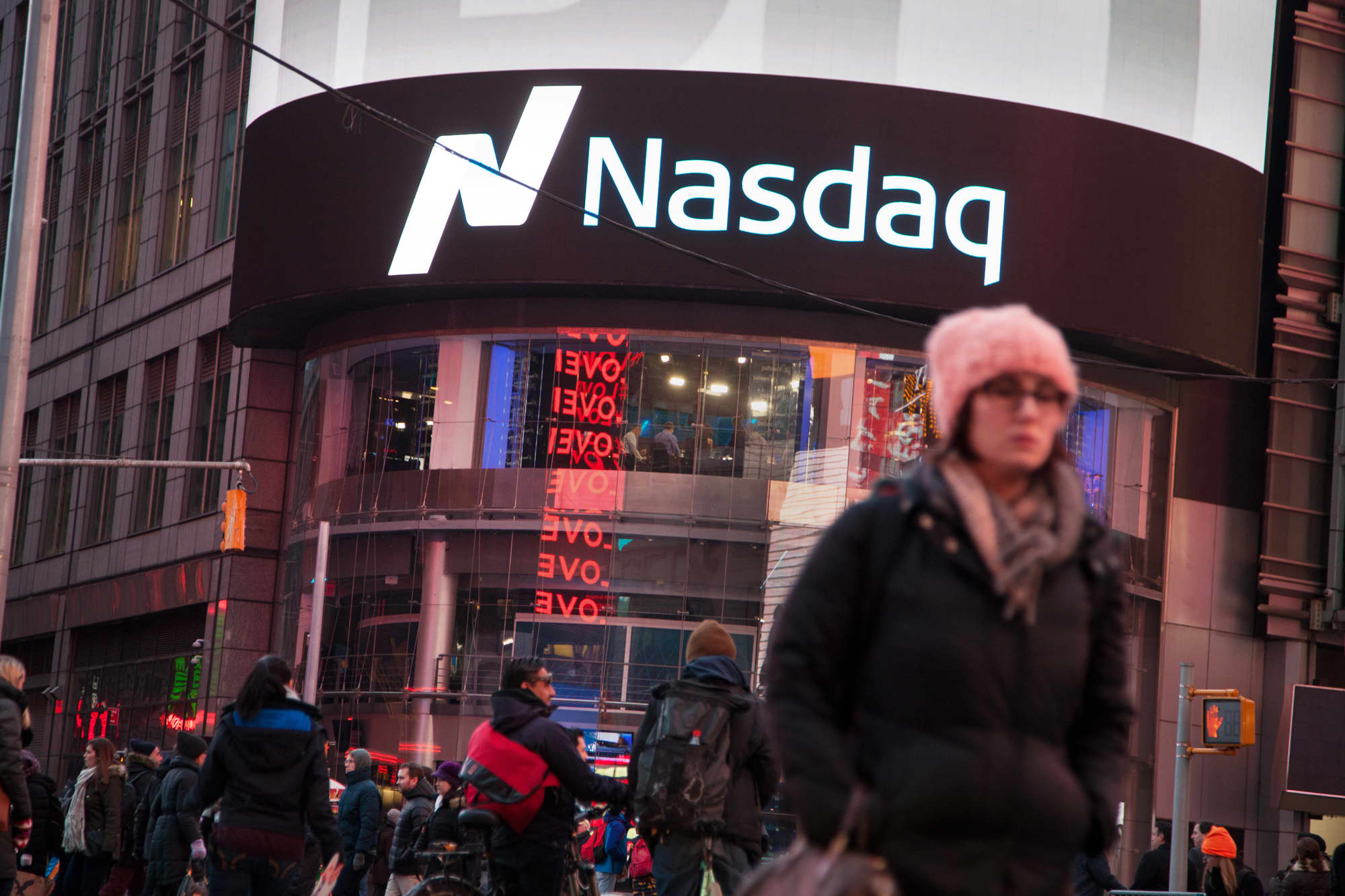Nasdaq gives up 2% gain, turns negative in final hour of trading

Scott Mlyn | CNBC
The Nasdaq Composite gave back its 2% gain and turned negative in the final hour of trading on Thursday.
The index was 0.1% lower on Thursday, after rallying more than 2% earlier in the session. The Nasdaq, which is home to many of the market’s biggest tech names, ended Wednesday more than 10% below a record set in November, indicating a technical correction.
The Dow Jones Industrial Average gained just 40 points, after being up more than 400 earlier in the day. The S&P 500 was flat. The small-cap benchmark Russell 2000, which hit a 52-week low on Wednesday, dipped 0.4% on Thursday.
Peloton tanked 20% on new it is temporarily halting production of its connected fitness products as consumer demand wanes, according to internal documents obtained by CNBC.
Technology stocks, like Zoom Video and Tesla, led markets higher for most of the day on Thursday. However, many lost steam towards the end of the session. Netflix dipped before its quarterly earnings slated for after the bell.
“Investors need to be aware that 2022 probably will be a much rougher ride,” said Ryan Detrick of LPL Financial. “With rate hikes coming and the historically volatile midterm year on the horizon, more violent ups and down could be in store for investors this year.”
Several earnings reports moved stocks on Thursday. Dow component Travelers posted beats on the top and bottom lines while American Airlines also beat estimates but lowered guidance. Travelers rose 4%.
United Airlines shares fell 1% after the company reported its quarterly results and warned that omicron has dented bookings and will delay its pandemic recovery.
“Earnings season is early, but overall we are looking at another solid quarter from corporate America. Yes, with rate hikes coming, we are dancing a delicate line and experiencing some normal market volatility, but the underpinnings of the economy remain quite solid,” added Detrick.
Stocks were little-changed as government bond yields remained elevated, part of a market repricing as the Federal Reserve gets set to tighten monetary policy.
The central bank meets next week, with markets indicating just a slight chance of action on interest rates. However, traders have fully priced in the first of what is expected to be four 0.25 percentage point hikes through 2022.
The two-year Treasury, which is most closely tied to Fed rate policy, most recently yielded about 1.04%, while the benchmark 10-year note was at 1.84%.
Unemployment data on Thursday signaled the surge in omicron could be hurting the recovery.
Jobless claims for the week ended Jan. 15 totaled 286,000 for the week, their highest level since October. The read was well above the Dow Jones estimate of 225,000 and a substantial gain from the previous week’s 231,000.
“The surge in jobless claims and drop in existing home sales has lead to some easing 10-year bond yields which could reflect some reduction in the degree the Fed could tighten – certainly dampens speculation of a 50 [basis point] rate hike in March,” said Kathy Bostjancic, chief U.S. economist at Oxford Economics. “Moreover we are in for more volatile markets due to the heightened degree of uncertainty surrounding the economic, inflation and interest rate outlook.”
On Wednesday, the Dow fell for a fourth straight day, dropping more than 300 points as Treasury yields built on their early 2022 gains. The S&P 500 also fell 0.9%. The Nasdaq Composite closed down by 1.15%.
Brad McMillan, chief investment officer at Commonwealth Financial Network, acknowledged that the turbulence could last for some time but said investors shouldn’t panic about interest rate increases and that they’re normal as the economy returns to normal.
“The economy and markets can and do adjust to changes in interest rates,” McMillan said. “This environment is a normal part of the cycle and one we see on a regular basis. The current trend is perhaps a bit faster than we’ve been seeing, but it is a response to real economic factors—and, therefore, normal in context.”
For the week, the Dow is down about 1.2%. The S&P 500 has lost 1.4% since Monday. The Nasdaq is the biggest loser, down 1.8% this week.




